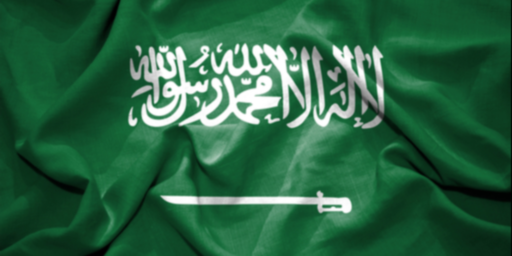NOT THE FINAL CHAPTER
UPI’s Claude Salhani sounds a cautionary note:
In fact, Saddam’s capture may not herald the sudden end of these attacks. Instead, it may well have the opposite effect — that of seeing the remnants of the Baath resistance push for an all out, final chance assault, as a vendetta for the demise of their leader. Another scenario is that with their leader captured and humiliated in front of the world, the resistance may putter to a halt, dry up and die away. But let’s not claim total victory too soon.
The real danger in Iraq today no longer emanates from the Baathists, but comes from the thousands of jihadi resistance fighters who have been pouring into Iraq. Unlike the Baathists, they are unlikely to be affected by Saddam’s demise. The jihadi fighters are the ones who have been the most active in recent months and all indications points to them stepping up their war against the U.S. occupation of Iraq.
The conditions under which Saddam was captured — alone with two bodyguard, a couple of guns, $750,000 and hiding in a “spider hole” in the ground — does not, at first glance, indicate that he was in any way in a position to lead a consistent resistance movement of any sort. There were no immediate reports of communication equipment or even a cell phone in the small underground hole he was hiding in. His appearance was for more that of a man trying to save his own life than that of one leading an uprising.
Recent reports form Baghdad also indicate that Osama bin Laden’s al-Qaida network has been funneling more and more of its efforts — both financial and logistical — away from Afghanistan, and concentrating them on Iraq instead, where the new war on terror is now being fought.
The immediate dividends from Saddam’s capture is that it will finally convince those Iraqis who were sitting on the fence, those who were unsure if the dictator would eventually return to power, that this dark chapter of their history is finally closed. Former Baath officials in U.S. captivity who saw Saddam looking like the prisoner from the “Count of Monte Cristo” will no longer fear his wrath and would likely become more cooperative with their American captors.
Most Iraqis have lived nearly all their lives under the ruthless authority of this dictator who tried to portray himself as a larger-than-life leader of the Arab world. Saddam’s 30-foot statues and ever-present colorful murals decorated every city, town and village square across Iraq. The Iraqi dictator was always seen impeccably dressed in tailored suits, or military dress. Now, seeing their one-time leader appear with disheveled hair, a long graying, bushy beard, and hiding like a rat, in what Lt. Gen. Ricardo Sanchez, the U.S. commander in Iraq, described as a “spider hole,” will convince them that the Saddam era is well and truly over.
As Adnan Pachachi, the current president of the Iraqi Governing Council, said, “The government of fear and security services is over.”
What is far from over, though, is the battle to eradicate the jihadi threat and to bring about stability to Iraq.
I don’t think anyone doubts this; I certainly haven’t sensed from any Administration or DOD spokesmen the idea that this wraps up the operation. Still, the capture of the symbol of the opposition is a huge step forward. Not only does it help derail the Former Regime Loyalist faction, but it also has the same sort of symbolic value that the surrender of Hirohito had in 1945: The end of Saddam as a godlike iconic figure. Conversely, his capture–and the humane way in which he has been handled–has to add to the mystique of the Coalition forces. These are essential steps in winning the confidence of the Iraqi citizenry.



